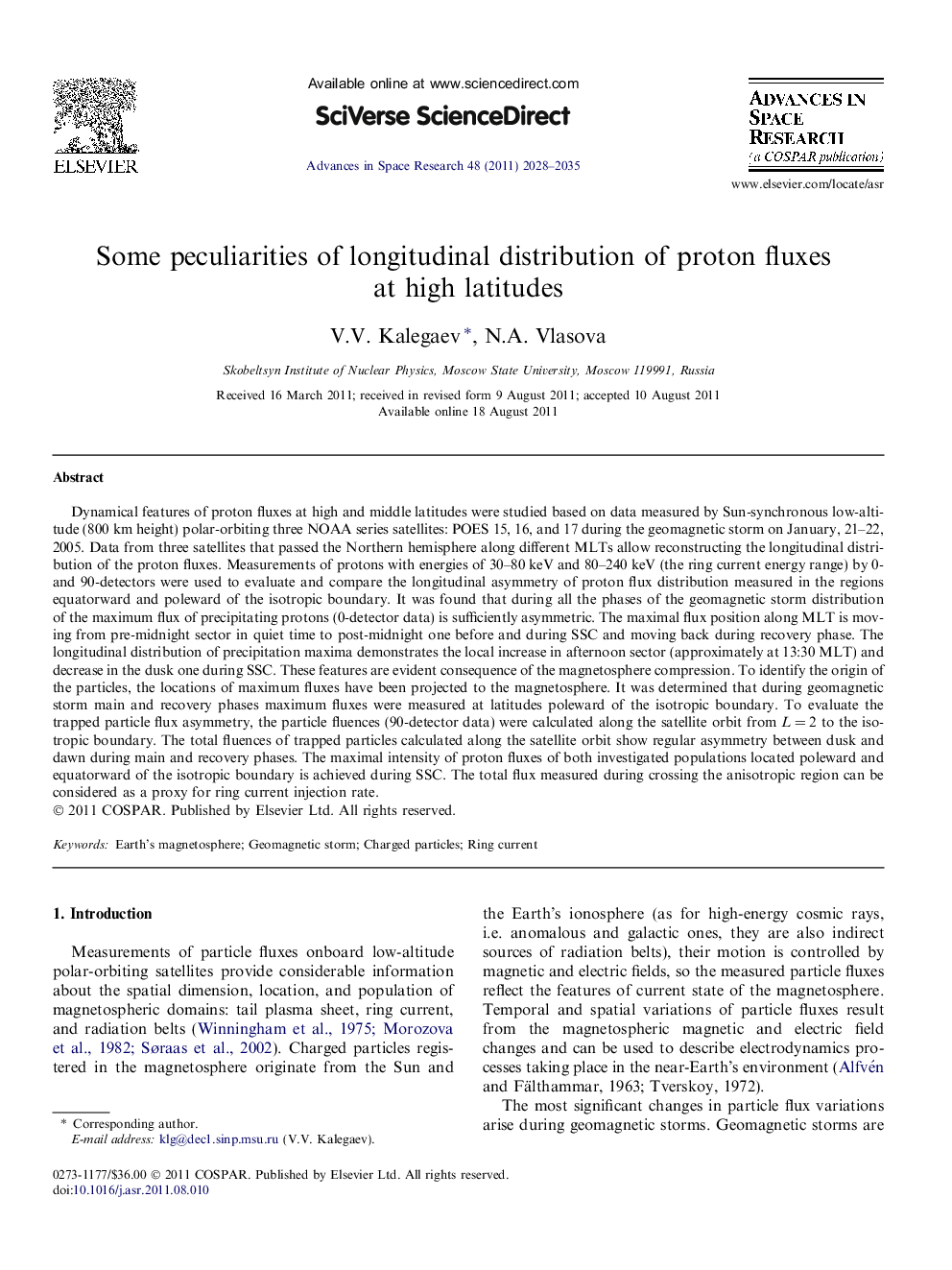| Article ID | Journal | Published Year | Pages | File Type |
|---|---|---|---|---|
| 1765547 | Advances in Space Research | 2011 | 8 Pages |
Abstract
Dynamical features of proton fluxes at high and middle latitudes were studied based on data measured by Sun-synchronous low-altitude (800Â km height) polar-orbiting three NOAA series satellites: POES 15, 16, and 17 during the geomagnetic storm on January, 21-22, 2005. Data from three satellites that passed the Northern hemisphere along different MLTs allow reconstructing the longitudinal distribution of the proton fluxes. Measurements of protons with energies of 30-80Â keV and 80-240Â keV (the ring current energy range) by 0- and 90-detectors were used to evaluate and compare the longitudinal asymmetry of proton flux distribution measured in the regions equatorward and poleward of the isotropic boundary. It was found that during all the phases of the geomagnetic storm distribution of the maximum flux of precipitating protons (0-detector data) is sufficiently asymmetric. The maximal flux position along MLT is moving from pre-midnight sector in quiet time to post-midnight one before and during SSC and moving back during recovery phase. The longitudinal distribution of precipitation maxima demonstrates the local increase in afternoon sector (approximately at 13:30 MLT) and decrease in the dusk one during SSC. These features are evident consequence of the magnetosphere compression. To identify the origin of the particles, the locations of maximum fluxes have been projected to the magnetosphere. It was determined that during geomagnetic storm main and recovery phases maximum fluxes were measured at latitudes poleward of the isotropic boundary. To evaluate the trapped particle flux asymmetry, the particle fluences (90-detector data) were calculated along the satellite orbit from LÂ =Â 2 to the isotropic boundary. The total fluences of trapped particles calculated along the satellite orbit show regular asymmetry between dusk and dawn during main and recovery phases. The maximal intensity of proton fluxes of both investigated populations located poleward and equatorward of the isotropic boundary is achieved during SSC. The total flux measured during crossing the anisotropic region can be considered as a proxy for ring current injection rate.
Related Topics
Physical Sciences and Engineering
Earth and Planetary Sciences
Space and Planetary Science
Authors
V.V. Kalegaev, N.A. Vlasova,
